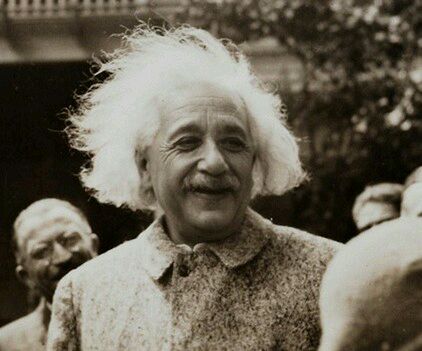(单词翻译:单击)
You may not feel outstandingly robust, but if you are an average-sized adult you will contain within your modest frame no less than 7 x 10 18 joules of potential energy—enough to explode with the force of thirty very large hydrogen bombs, assuming you knew how to liberate it and really wished to make a point. Everything has this kind of energy trapped within it. We’re just not very good at getting it out. Even a uranium bomb—the most energetic thing we have produced yet—releases less than 1 percent of the energy it could release if only we were more cunning.
你或许觉得自己不大健壮,但是,如果你是个普通个子的成人,你那不起眼的躯体里包含着不少于7×10^18焦耳的潜能——爆炸的威力足足抵得上30颗氢弹,要是你知道怎么释放它,而且确实愿意这么做的话。每种物体内部都蕴藏着这样的能量。我们只是不大善于把它释放出来而已。连一颗铀弹——我们迄今为止制造出的能量最大的家伙——释放出的能量还不足它可以释放出的能量的1%,要是我们更聪明点的话。
Among much else, Einstein’s theory explained how radiation worked: how a lump of uranium could throw out constant streams of high-level energy without melting away like an ice cube. (It could do it by converting mass to energy extremely efficiently à laE =mc 2 .) It explained how stars could burn for billions of years without racing through their fuel. (Ditto.) At a stroke, in a simple formula, Einstein endowed geologists and astronomers with the luxury of billions of years. Above all, the special theory showed that the speed of light was constant and supreme. Nothing could overtake it. It brought light (no pun intended, exactly) to the very heart of our understanding of the nature of the universe. Not incidentally, it also solved the problem of the luminiferous ether by making it clear that it didn’t exist. Einstein gave us a universe that didn’t need it.
其中,爱因斯坦的理论解释了放射作用是怎么发生的:一块铀怎么源源不断地释放出强辐射能量,而又不像冰块那样融化。(只要把质量极其有效地转变为能量,这是办得到的:E=mc^2。)该理论解释了恒星为什么可以燃烧几十亿年而又不把燃料用尽。(同上。)爱因斯坦用一个简单的公式,一下子使地质学家和天文学家的视界开阔了几十亿年。该理论尤其表明,光速是不变的,最快的,什么速度也超不过它。因此,这使我们一下子弄清了宇宙性质的核心。而且,该理论还解决了光以太的问题,说明它并不存在。爱因斯坦的宇宙不需要以太。


